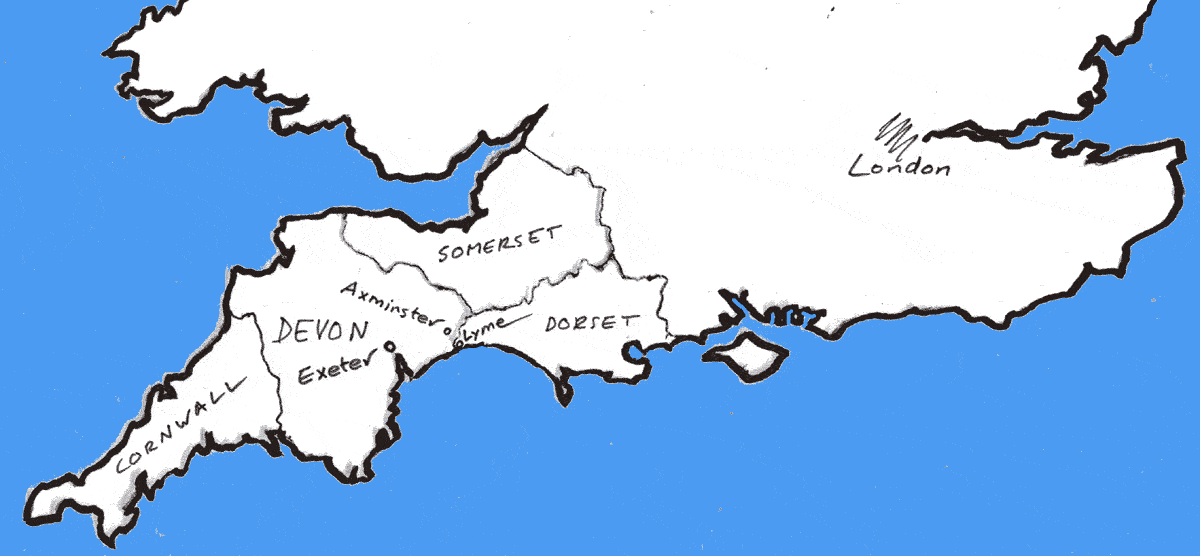The Lyme Maze Game

Why Lyme? This was what people asked when I chose to settle here—actually, those in America asked "Where is that?" and those in England asked "Why would you want to come back here?" I had long had my eye on Lyme Regis as a candidate for a place to live—an ideal presumably impossible, like many another select spot on the map of the planet. Lyme is not on, but beside, the main routes from London to the deep southwest, the famously scenic counties of Devon and Cornwall. It's about a hundred and forty miles from London: outside the "commuter radius", but London is fairly easy to reach in one direction, and Land's End in the other.
England's southwestern peninsula, ending in the toe and heel of Cornwall, reminds everyone of a leg, reaching for warmer seas. (A leg less elegant in shape than Italy's.) If the southwest is a leg, then broad Devon is a combination of fat southern calf and rocky northern knee, or perhaps the flared top of a boot; and leading to Devon is a relatively narrow thigh, scooped out by Lyme Bay on the south and Bridgwater Bay on the north, and shared between two more counties, Dorset and Somerset. The trunk routes to the southwest thread through the hills of this causeway without touching the coast; the railway happens to take a southerly dip to within six miles of Lyme, at Axminster. Lyme is at the extreme western end of Dorset; the Devon boundary curls tightly around it. Counties are only human abstractions; you don't see walls around them. And yet they do, to those given to gazing at maps, seem like rooms. It does feel as if Dorset is a balcony open to the sun along a southern coast, with Lyme perched at its far corner. And Lyme is up against a sort of wall. The coast beyond it is an almost impenetrable wilderness (called the Undercliff). Only a twisting footpath struggles through, to emerge in another ancient kingdom, that is, another county. ==PICTURE: map, closer, of "balcony" and Undercliff In my childhood our family spent summers in Devon, at a farm near the mouth of the river Exe. I was "navigator" for my father as he drove, and I had an inchoate feeling of sacredness about the country that led down toward Exeter; the route found a subtle way among the rumple of hills between Somerset and Dorset, past places with deeply evolved names, Yeovil, Crewkerne, Honiton, Clyst Honiton, Broad Clyst, Aylesbeare, Ottery St. Mary. Later, in one of my hitch-hiking weekends from army service, I walked along the cliffs of eastern Dorset. I had never been to Lyme, until in 1985 my parents arranged for us to meet there, and coming over from America with my bicycle I rode from Heathrow airport, taking several days (all against a twenty-mile-per-hour wind). I slanted down by way of Winchester and Salisbury, first glimpsed the sea from the high downs between Dorchester and Bridport, but didn't come close to it until arriving at the great hill down into Lyme. Hm!—that might, for a cyclist, be a count against it as a place to live. The map suggested there were just two ways out of it, both climbing considerable stairways of contours to reach the raised hinterland. But the hill is exhilarating to descend, and the entrance is dramatic: first, the shining sea—towering, as it never can above a town on a flat coast. PICTURE: another, of the view down to Lyme, the Cobb visible] Then, dropping down swings of the road—
|
